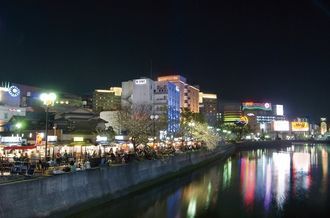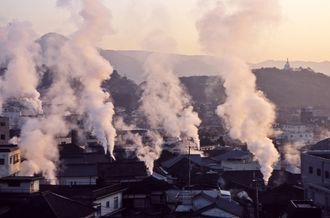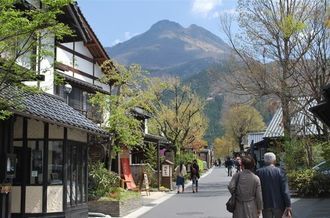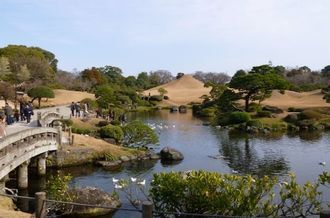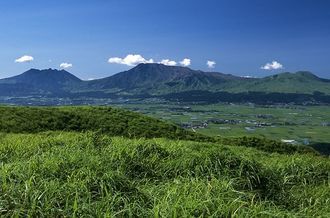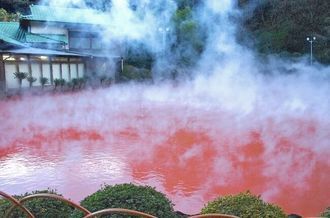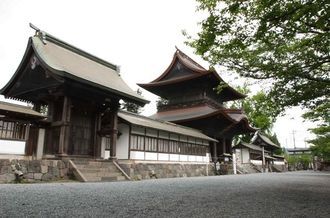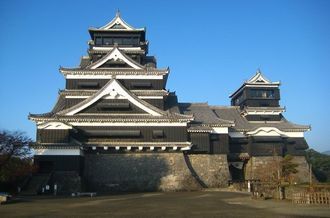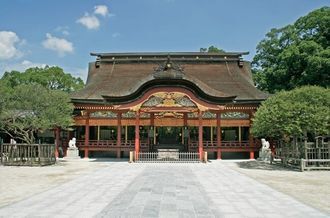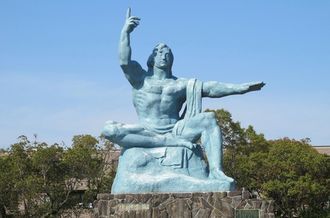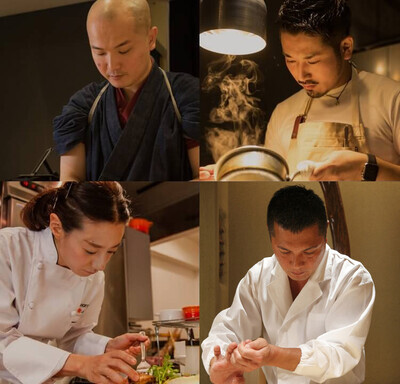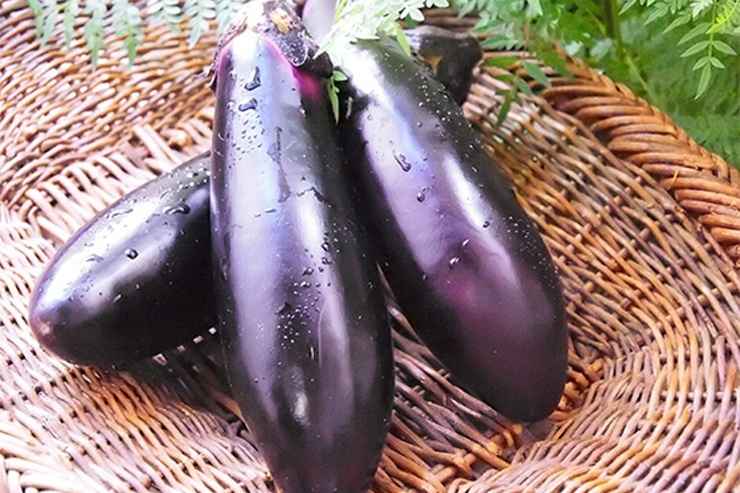Restaurants in Kyushu
Search for restaurants by area
-
Hakata福岡市/博多
-
Beppu別府
-
Yufuin湯布院
-
Kumamoto熊本
-
Aso阿蘇
-
Dejima出島
-
Yakushima Island屋久島
-
Kurume久留米
-
Kita Kyushu北九州
-
Arita有田
-
Imari伊万里
-
Izumi出水
-
Kirishima霧島
-
Tamana玉名
-
Aoshima Island青島
-
Unzen雲仙
-
Hyuga日向
-
Takachiho高千穂
-
Hita日田
Prefectures
Attractions in Kyushu
Whether it will be your fist visit to Japan or you're already an experienced connoisseur, our guide to things to see and places to go in Japan will cover all what you might need to know.
Destinations
Prefectures
Landmarks
Editor's Picks
Articles of Kyushu
Learn more about the local culinary scene to get ready for your Japan trip.
Here are the articles to introduce the best restaurants in Kyushu
-
Recommended Restaurants for Visiting While Embarking on a "Suzume" Pilgrimage throughout Japan
-
A Winter Must-Eat! Taste Authentic Motsu-Nabe in the Center of Fukuoka
-
The Best Restaurants in Japan 2025 Edition
-
Restaurants in Fukuoka Where You Can Enjoy Your Meal While Viewing Cherry Blossoms
-
5 Recommended Stylish Cafes in Fukuoka and Hakata
-
5 Fukuoka Restaurants Offering Irresistible Offal Hotpot with Piping Hot, Plump Textures
-
Indulge in a Luxurious Girls' Day Out with Hotel Lunch: 5 Recommended Hotel Restaurants in Hakata, Fukuoka
-
Restaurants in Fukuoka Where You Can Enjoy Eel, Sushi, Yakiniku, and More Even for Lunch
-
Eat Lunch for 1,000 JPY or Less! Must-Try Restaurants in Fukuoka
-
Five Restaurants to Enjoy Local Flavors in Kagoshima's Tenmonkan Area
-
The 10 unmissable restaurants in Kyushu
-
Popular Steak and Teppanyaki restaurants around Hakata
-
5 Recommended Restaurants to Visit Near Kumamoto Castle
-
Urban Greenery to the Great Outdoors: The Best Autumn Foliage Spots in Kyushu for Breathtaking Views
-
12 Popular Gourmet Spots Around Hakata Station
-
View the Gorgeous Hanging Hina Dolls of Yanagawa City in Fukuoka Prefecture During Hinamatsuri!
-
20 Best Restaurants in Fukuoka, Japan : Discover an Abundance of Regional Specialties
-
5 Must-Visit Restaurants to Savor Kumamoto's Specialty 'Akaushi' Beef When Visiting Kumamoto Castle | Kumamoto
-
The 10 unmissable restaurants in Kyushu, March 2019
-
So Good You'll Want to Keep it a Secret! 7 of Hakata's Best Gyoza Restaurants
-
5 Restaurants in Fukuoka with Extra Hygiene Measures to Fight Coronavirus
-
15 Restaurants with Delicious Japanese Cuisine in Nakasu, Fukuoka
-
13 Amazing Restaurants and Izakaya in Kumamoto
-
Embrace the Arrival of Spring With Plum Blossoms and a Seasonal Feast
-
5 Restaurants in Fukuoka and Hakata to Enjoy the Flavors of Kyushu
-
Kaiseki cuisine and Japanese restaurants to visit in Fukuoka Prefecture
-
Warm up Your Winter: 5 Fukuoka Restaurants Offering Abundant Japanese Sake and Shochu Choices
-
5 Top Restaurants for Enjoying Premium Japanese Beef in the Popular Fukuoka-Hakata Area
-
15 Best Yakiniku Restaurants in Fukuoka – Enjoy Premium Wagyu Including Kobe and Saga Beef
-
Enjoy easily accessible Japanese cuisine: 6 recommended restaurants in the Hakata area!
-
The best restaurant in Fukuoka to enjoy delicious tempura.
-
15 Restaurants to Enjoy Wine in Fukuoka
-
Top 5 Recommended Restaurants to Savor Premium Wagyu in Fukuoka, a Popular Area!
-
Restaurants in Tenjin, Fukuoka For Fans of Sake
-
Join Over Two Million Spectators at the Hakata Dontaku Festival!
-
11 Lunches Around Hakata Station
-
Try Miso Motsunabe if you wish to try Motsunabe in Hakata by yourself! Hakata Motsunabe Yamanaka
-
Cheesy Goodness! 5 Restaurants in Fukuoka Offering an Abundance of Delicious Cheese Dishes
-
If you want to eat delicious meat! Here are 5 must-visit meat gourmet restaurants in Nagasaki.
-
No worries about getting wet even on rainy days! Five selected Japanese restaurants near Hakata Station|Fukuoka
-
15 Fukuoka Restaurants to Enjoy Yakiniku for Dinner
-
5 Restaurants Near Nokonoshima Island Park in Fukuoka, Where Flowers Are in Full Bloom
-
The 10 unmissable restaurants in Kyushu, July 2019
-
Local-Approved! 14 Renowned Motsu Nabe Restaurants in Hakata
-
5 Recommended Japanese Restaurants to Visit When You Go to Kumamoto Castle | Kumamoto
-
Food and Sightseeing in Kumamoto: Ramen Isn't All That Kumamoto Is Famous For!
-
[Fukuoka] Top 10 Izakaya for Enjoying Local Cuisine
-
Top 5 Luxurious Restaurants to Enjoy in Fukuoka, a Popular Area in Kyushu | Fukuoka
-
Kyushu trip! If you're eating meat in Nagasaki, Kumamoto, or Miyazaki, this is the place!
-
50 Restaurants in Japan Where Luggage Storage Service is Available
-
6 Select Restaurants to Enjoy Kyushu's Delicious Local Cuisine
-
5 Fukuoka Restaurants Perfect for Leisurely Late-Night Dining
-
5 Best Restaurants for an Unforgettable Experience in Hakata, Fukuoka
-
A Trip Around Kyushu - 18 Select Izakaya to Enjoy Outstanding Local Food
-
For a special date with someone important! Top 5 Japanese restaurants in Fukuoka with relaxing private rooms
-
Where to Visit and Things to Do in Fukuoka
-
Motsunabe: How to Eat and the Best Restaurants in Fukuoka
-
5 Recommended Restaurants in Oita for a Relaxing Date
-
5 Recommended Shops in Areas Currently Gaining Attention from Foreigners|Kyushu
-
Recommended restaurants at Amu Plaza Hakata directly connected to Hakata Station
-
5 Must-Visit Delicious Yakitori Restaurants in Fukuoka
-
Recommended Bars and Dining Bars in Fukuoka and Hakata
-
12 Izakaya in Fukuoka and Hakata with the Best Seafood!
-
Motsunabe or Mizutaki? Which Local Delicacy Is Your Go-To When in Fukuoka?
-
Boost your stamina with delicious beef! 5 restaurants in Fukuoka where you can enjoy Wagyu on a teppanyaki grill.
-
Day Trip to Kokura and Kitakyushu! Enjoy Local Food, Shopping, and a Visit to Kokura Castle
-
Must-Visit Restaurants in Kyushu to Savor Local Flavors While Traveling
-
12 Recommended Spots in Hakata to Enjoy Kyushu Cuisine
-
A must-visit during your sightseeing! International gourmet restaurants located within Amu Plaza Hakata, directly connected to Hakata Station
-
17 Recommended Restaurants Where You Can Try Specialties of Fukuoka
-
Five recommended restaurants near the station in Kokura, Fukuoka, with a comforting taste and pleasant atmosphere.
-
5 Retreat-Style Restaurants Ideal for Mature Dates in Fukuoka
-
A place to taste authentic Fukuoka Motsunabe and popular a la carte dishes. Hakata Motsunabe Yamanaka
-
Yakiniku, shabu-shabu, hamburgers... A restaurant where you can enjoy exquisite dishes made with Saga beef | Saga
-
15 Izakaya to Visit in Tenjin, Fukuoka
-
5 Recommended Restaurants to Visit After Exploring the Popular Tourist Destination "Hakata" in Kyushu | Fukuoka
-
15 Highly Recommended Izakaya in Nakasu and Hakata, Fukuoka
-
Recommended restaurants around the station that visitors should visit when in Fukuoka and Hakata.
-
Enjoy Around Hakata Station! Top 5 Delicious Restaurants to Visit on a Date | Fukuoka, Hakata
-
5 Restaurants to Enjoy Delicious Food in a Pleasant Atmosphere in Fukuoka
-
Experience Nagasaki's Natural Flavors at These 5 Must-Try Restaurants
-
A Must-Visit When in Kumamoto! Recommended Restaurants Where One Can Be Healed and Satisfied by Deliciousness | Kumamoto
-
Five Restaurants to Visit in Oita to Enjoy Kyushu's Ingredients
-
A charming restaurant in Kumamoto, perfect for a special meal.
-
4 Recommended Sukiyaki Restaurants in Fukuoka
-
Springtime Splendor Equal to Cherry Blossoms! Where to Find Japan’s Best Wisteria
-
The 10 unmissable restaurants in Kyushu, December 2019
-
Sunflower Wonderland: Kyushu's Top Sunflower Fields
-
12 Stylish Restaurants to Visit For Lunch in Yakuin, Fukuoka
Kyushu - Feature Stories
Visit Japan's finest restaurants, exclusively selected by Savor Japan, and discover the latest gourmet trends.
Learn moreKyushu - Chef's Recommendation
On the menu
Discover the best restaurants ideal for someone with special dietary restrictions or preferences by menu items and ingredients.
-
06.27.2016
You can't keep your hands off tebasaki.
-
Crispy yet juicy, sweet but spicy, tebasaki karaage (deep-fried chicken wings) are extremely popular throughout Japan. They go fantastic with beer and are hard to stop eating once you get started. Moreover, women know they're chock full of collagen that's good for their skin. Said to have originated from Aichi Prefecture, tebasaki are similar to buffalo chicken wings served in the West, but have a Japanese soy sauce base. There are variations on the recipe, but the most popular flavor is sweet and spicy. Why not try authentic tebasaki this summer in Aichi Prefecture!
-
06.27.2016
Slurp your soba like a Japanese and feel the joy.
-
Japanese slurp their soba (buckwheat noodles) because it tastes better that way. While enjoyed throughout the year, soba is especially satisfying when eaten cold in the summer. Japanese also eat soba on special occasions such as New Year's Eve and after moving to a new home. Soba restaurants were traditionally established in old renovated Japanese houses, but tachigui (stand-up) soba shops are now everywhere, even on train station platforms, reflecting soba's huge popularity. Always delicious, soba can be eaten with sake and hors d'oeuvres to brighten any occasion.
-
06.27.2016
The luckiest vegetable in Japan. Nasu.
-
Nasu (Japanese eggplant) became a symbol of happiness in Japan because its pronunciation is the same as for the word "achieve." There is even a popular idiom, "Mount Fuji first, hawk second and eggplant third" that ranks nasu third in the list of auspicious things that can appear in your first dream of the year. Nasu have been cultivated in Japan for the last 1200 years and are commonly eaten in homes as well as at restaurants. They taste great, whether grilled, boiled, baked or fried, and contain potassium that helps cool down your body in the hot summertime. We especially recommend eating them grilled as an appetizer with soy sauce, grated ginger and dried bonito flakes. Simply delicious!
Videos
SAVOR JAPAN merged with Cozy Japan, a travel information site on November 28, 2017.
-
![]()
Dazaifu
3:02
Umegaemochi Workshop
-
![]()
Dazaifu
2:21
Kiuso Workshop
-
![]()
Hakata
2:03
Ohori Park
-
![]()
Hakata
2:21
Hakata Doll Workshop
-
![]()
Hakata
2:22
Hakata Folk Museum
-
![]()
Sumiyoshi
2:09
Street Food in Nakasu
-
![]()
Hakata
2:08
Japanese Sweets Zenzai
-
![]()
Hakata
1:50
Hakata Station Rooftop
-
![]()
Hakata
3:07
The Beach in Nokonoshima
-
![]()
Hakata
2:06
Nokonoshima Island park
-
![]()
Dazaifu
2:21
Starbucks in Dazaifu
-
![]()
Uto/Uki
4:06
DOLPHIN WATCHING-Meet with wild Dolphins in Kamiamakusa
Like and Share us












